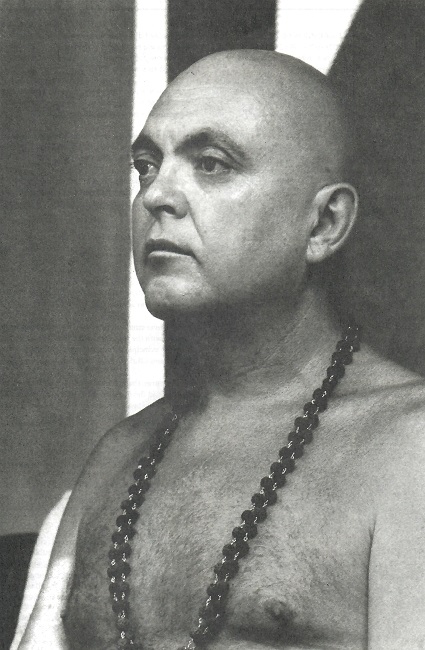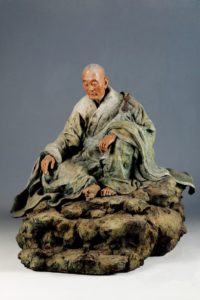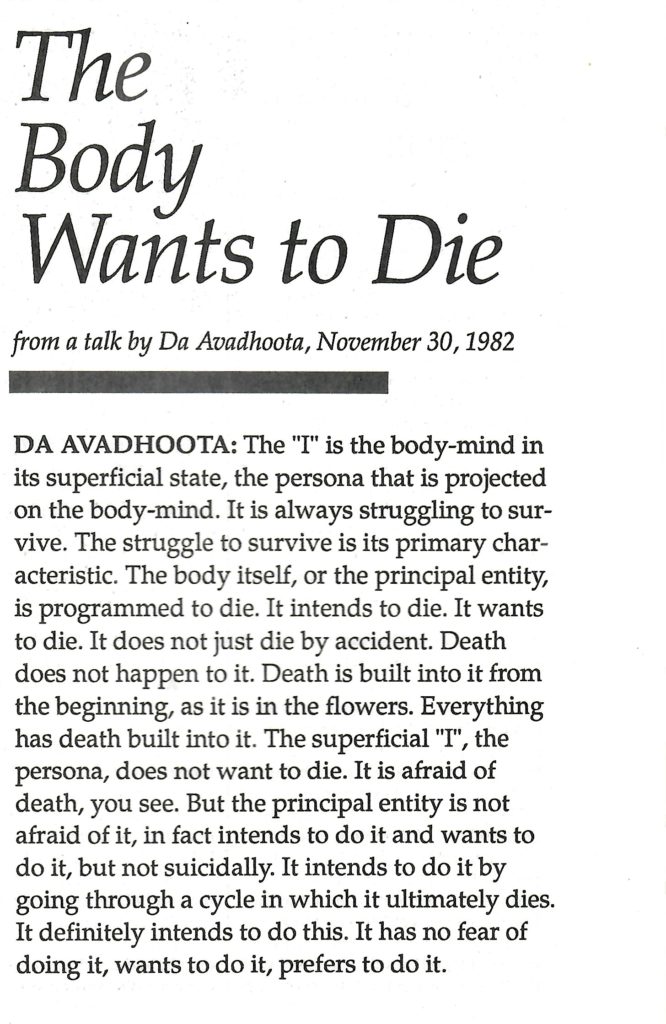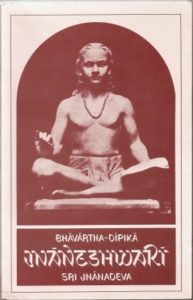Originally published in


Adi Da Samraj: The vulgarization of human life is something that must be changed, and among the things that must be changed is the kind of treatment the dead generally get, even the kind of treatment the sick get from medical people who have the sole purpose of keeping the individual alive. Only on some level is that purpose laudable and right. As long as life can be maintained, as long as it would be possible for the individual to exist fruitfully and consciously, it is appropriate enough to take life-saving measures. But much of what is being done has the purpose not to provide a vehicle of embodiment for someone’s practice but rather to fulfill the vulgar idealism of keeping somebody alive, which is based on fear and non-sensitivity to the state of somebody who is dying.
We therefore take bizarre measures to keep somebody alive even if only in a vegetable-like form, as machine-made life, and we consider such things as freezing people when they are dead, so that they can be reanimated two hundred years from now when there exists the medical ability to treat them. All these points of view are based on a vulgar model of existence and do not take into account the real significance of death and the process the entity goes through when it dies. We must start treating one another while we live and after we die according to real wisdom, real understanding, and sensitivity. Then we will live with one another differently, and we will also treat one another differently in death, which Is a very profound affair that we the living affect by the various things we do to the body and the various ways we relate to someone who has died.
What follows the cessation of breath, what follows obvious physical death, is actually a period of samadhi – (Samadhi” literally means “placed together”. It indicates a state of absorption and equanimity.) – in which there is no animation of the physical body or the physical brain of any kind that could be detected in general by medical or scientific means, yet it is still there. There is this inner breath that still goes on, a kind of meditative state in someone who is in a higher state. A kind of samadhi still associated with the body is possible, particularly in the case of Adepts or highly advanced practitioners. Those who are awake and attuned to this process know when the entity is still there, not just hovering but still associated with the body in samadhi or, in the case of a less evolved practitioner, a kind of sleep.
Particularly in the case of an individual who has literally entered into samadhi at the point of physical death, the samadhi remains the context of that individual for some period of days. In other words he or she is still alive, still associated with the physical. The physical body is still part of the being, but he or she is in samadhi during that time. In any case to separate from the physical takes a certain period of days for all entities generally – sometimes the separation is quick, but we take the possibility of a gradual separation into account by allowing a few days for the separation. The minimal time that should be allowed as a rule is three or three and a half days or so. This is the most common traditional period of time, but frequently more time than this is allowed. Particularly in the case of an Adept or a highly developed practitioner, it might be found appropriate to allow more time.
What must be done, then, is to observe the state of the body after death and generally keep the body in a seated position, a meditative posture, rather than lying in a coffin as if waiting for the last judgment. Keep the body undisturbed, surrounded by people who know what they are doing there. Generally for most individuals, perhaps three or three and a half days is sufficient, and then generally cremation should follow. Even after cremation a period of time should be set aside when some people just consciously regard the individual as passed, and work on his or her release, meditating while regarding the person with the disposition of release, even for days or weeks, until there is a general feeling that the entity has passed out of the gross form altogether.
In the case of an Adept or the Spiritual Master or an advanced practitioner, perhaps the best rule is not to set any limit on time. Keep the person in a place undisturbed, and when you begin to see that the body is breaking up, or starting to decay, that is the sign that the inner breath has gone, because even if the body has had a disease, a certain degree of preservation will be obvious in the body certainly for hours afterward, very often for days, even weeks. Perhaps the best rule, therefore, is to allow time to pass until you begin to see the signs that the body is decaying.
(Da Avadhoota reads from a traditional text) “In Tibet some great lamas and yogis have experienced a state of dharmakaya* and stood up two or three days in meditation posture after death.”
* Mahayana Buddhism distinguishes three aspects of the Total Reality – the three “bodies” of the Buddha. The “dharmakaya” or “Body of the Law” is the uncreated Transcendental Reality.
They allow them to stay in that state, you see.
“When very highly realized lamas die, they will often stay in that posture after death meditating from three to seven days, perhaps even longer, and when meditation is over they have realized enlightenment and the body will collapse.”
When you begin to see the signs of the collapsing of the body or when the body will not even sit up naturally, when it starts falling over or when you see signs of decay or when there is a sensitivity on the part of those who have some real feeling for this process that the inner breath or the inner life of the bodily being has separated out, then it is appropriate to take the next step, which is burial or cremation, generally cremation, except in the case of an Adept.

There is a tradition for preserving the body of the Adept. Sometimes the body is not merely not cremated, but it is embalmed in various ways. They sometimes lacquer the body, or do all kinds of things to keep the body physically preserved. Sometimes the bodies of teachers in the Orient are kept in various monastaries. The Sixth Patriarch, for instance, and others in his tradition were lacquered, and their bodies are still sitting in monasteries – at least they were until recently. In Tibet there also exists the tradition of embalming individuals and keeping their bodies. There is also a tradition for cremating even Adepts, but you can see the usefulness, not necessarily in embalming or trying to keep the body from decaying, but of not cremating the body of the Adept. The body of the Adept is kept as a focus of Grace, a Samadhi site is constructed, properly made, properly served and so on, and the body is buried, generally placed directly in the earth or perhaps kept in a chamber without embalming. And then the place is used as a temple, a point of contact.
In the case of some rare Yogis, the inner life or inner breath does not leave the body. Jnaneshwar, whom you all know for his commentary on the Bhagavad Gita
called Jnaneshwari, is presumably one of these individuals who at the point of death went directly into samadhi and has kept his inner breath or inner life associated with the physical body ever since, for hundreds of years. His body is still in the place he prepared underground, beneath a temple that was built over it, and it has been left that way ever since. It is said that a few hundred years later another individual, I believe it was Eknath, went down into the chamber where Jnaneshwar’s body is, touched the body, and reported that it still felt warm and that it was still preserved and supple. It is not physically animated, but the inner breath or Yogic life is still associated with that body. The place is therefore a useful place of meditation.
Presumably, even though the inner breath in the particular form that preserves the body may pass at some point, the body of every Adept, having been the vehicle of the “nirmanakaya”*, or Enlightened being, during that lifetime, remains a useful seat of Spiritual Transmission, and the place where it is buried will remain a useful seat of Spiritual Transmission. Somehow the Life or Light of Transmission will remain.
*The “nirmanakaya” or ‘body of manifestation” is the assumed mortal frame of the eternal Buddha or the Divine Person.

PRACTITIONER: Prefers at a certain time to do it?
DA AVADHOOTA (ADI DA SAMRAJ): Yes. At a certain point.
Because we are not really in touch with our basic existence, altogether, we are not even in touch with our basic physical mechanism and its real inclinations and designs. We are only superficially related to the body. We say we are the body – but we do not breathe it, we do not manufacture it, we do not do anything much at all, you see. In fact, most of the things we do interfere with this bodily life and throw it out of balance. We do not as a rule show much intelligence in our treatment of our own physical existence. We are this persona, built on the body, which has all its programs and which is perfectly willing to go through with them, intends to, has always intended to. Behind the body are all the mechanisms of Nature, always intending not only to come into being but also to change and to die, having no fear of doing that, intending to do it, preferring to do it.
The Transcendental Self or Divine Condition in which all of this is arising is also not in the least bit disturbed by this cycle, even does not show any interest in the fact that it is going on, is not in any sense changed by it. The Divine or Transcendental Being is totally indifferent to Nature. Nature is a play upon the Divine, but the Divine Itself has no inclination of any kind, is not threatened by Nature, not concerned by it, not changed by it.
Really, in all of Nature, only at the level of imagined beings do we find any concern for these terrible events, including death. We are imagined beings. We are not very real. We are only concocted on the basis of a Real Entity and an ultimate Real Condition. We say we are the body, but we are really dissociated from the body. We are a psychological self-image, you see, that does not time itself very well with conventional manifest reality or with Transcendental Reality. The one called “I” is an illusory character, and it is totally out of sync with Nature and the Divine. That one is wishing there would be no death, creating big super-cultures that pursue survival, dominance of Nature, and immortality. Human civilization is basically the collective game of all these imaginary personas. From the point of view of Nature, including the body, and from the “Point of View” of the Divine, death does not make the slightest bit of difference. It is not resisted in any sense. It is exploited, as a matter of fact. We are the only ones that seem to be worried about it.
PRACTITIONER: Master, we’ve talked before about the fact that in Nature when something is being eaten, the entity helps. In other words, it doesn’t resist the devouring at a certain point.
DA AVADHOOTA (ADI DA SAMRAJ): You see this in many cases anyway. Some clearly resist. But I’ve seen films of fishes being eaten. Some big fish comes into a school of thousands and thousands of fish, and you can see them lining themselves up in the flow or current of being eaten, with this fish-eye look, this unconcerned, completely surrendered attitude. But many other creatures struggle against death. And many creatures, including human beings, have what appear to be horrible death experiences, although in general they do not last very long.
PRACTITIONER: You have also said that a mechanism in the body dissociates us from the body when something terrible is happening or during great pain.
DA AVADHOOTA (ADI DA SAMRAJ): At some point. You can go through a great deal of pain before then, though.
If you synchronized your consciousness more with the physical entity, much of the psychological fear of death would already disappear, you see. There is still greater wisdom than that, but fear of death is basically a product of psychological dissociation from real existence, either at the level of the manifest form, the body itself, or at the level of the Transcendental Condition. When you dissociate from those real I dimensions, you become locked into the dissociated character that is this , Narcissus,1 the imaginary persona.
Bodies are not philosophizing about death. Only these persona are philosophizing about it. Bodies intend to die. They intend to exist only for a certain span, for a certain mechanical purpose, and then to be recycled. They haven’t the slightest concern about it. And the subtle genetic or life-force motivations that produce species have no concern for death, nor are they trying to eliminate the death factor. They always build it in.
When you go to sleep at night, you are not concerned about the body. There is no thought about the body at all. You do not inherently require this body, therefore. You just cling to it and struggle in relationship to it in a certain condition or moment in Nature that is unnecessary. It is not an inevitable moment. It is a mechanical event that will tend to arise as long as you are not established in the Eternally Sufficient Condition, which is like sleep only in that It is not attached to the body or Nature. It is “Indifferent”2 to all that. But It is not like sleep in that It is unconscious or dark, you see. It is fully conscious, but It has no sense of separation.
1. Narcissus, the self-lover of Greek mythology, is a key symbol in Da Avadhoota’s criticism of men and women as self-possessed seekers, contracted upon themselves, whose principal and chronic activity Da Avadhoota summarizes as “the avoidance of relationship”.
2. Heart-Master Da has described the process of Transcendental Self-Realization as a revelation that takes place in four stages – “Transfiguration”, ’Transformation”, “Indifference”, and “Outshining” or ’Translation”.
“Indifference” is Inherent Freedom from and lack of concern for all conditional objects, relations, and states. In the Way of the Heart, “Indifference” stands in contrast to the ascetical, or life-negative, viewpoint, which colors much of traditional religion and spirituality, and which is epitomized in the strategic exclusion of conditional appearances. Rather than seeking to cling to the Transcendental Position by excluding conditional existence, the “Indifference” of Enlightenment does not attempt to avoid or escape any conditions.
